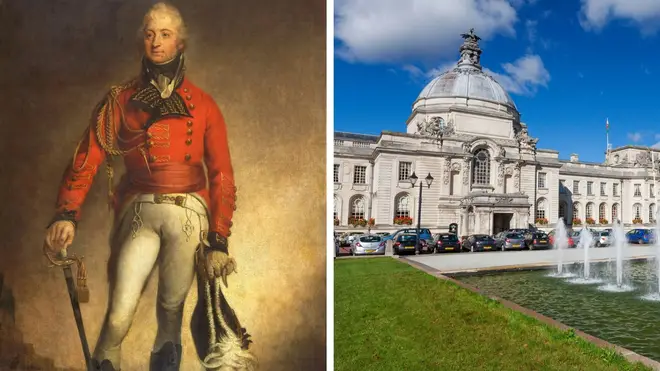
Iain Dale 7pm - 10pm
3 November 2021, 15:24

A portrait of a British army commander who owned and abused slaves has been taken down by National Museum Wales.
Sir Thomas Picton was the highest-ranking officer to be killed at the Battle of Waterloo, where a coalition including British troops defeated Napoleon.
The Welsh general also served as the governor of Trinidad, where he abused slaves he owned, and in the light of Black Lives Matter his portrait has been put in storage at the Cardiff museum.
It follows a youth-led initiative called Reframing Picton, which will see two artists with Trinidadian roots reinterpret his legacy and give context to his life, and a decision by Cardiff City Council to remove a marble statue of him from City Hall.
Kath Davies, director of collections and research at Amgueddfa Cymru (National Museum Wales), said: "This is another important step for Amgueddfa Cymru in examining our national collections and thinking about who we display in our Faces of Wales gallery and why.
Read more: National Trust faces backlash over 'gimmicky' contemporary collections
Read more: James O'Brien reflects on the moment his view on slaver statues changed

James reacts as City of London decides to keep slave trader statues.
"This project replaces one artwork, which assigns great importance to someone whose actions as governor of Trinidad even at the time were seen as cruel, with a celebratory portrait of a worker - someone we could today consider to be a hero.
"Looking ahead, Amgueddfa Cymru will be creating educational resources on the history and achievements of communities experiencing racial inequalities within our society.
"These will support the recently announced changes to the curriculum by the Welsh Government."
Fadhili Maghiya, director of the Sub Sahara Advisory Panel, which helped National Museum Wales with the move, added: "As we aim to build a Wales that is inclusive, built on the foundations of equality and one which focuses on community cohesion and appreciative of the different cultures that exist in our country, we need to celebrate those who are representative of the society we live in.
"Those individuals should be displayed on the Faces of Wales Gallery."

Statue of the Queen toppled in Canada during protests
The Picton portrait was given to the museum by the Earl of Plymouth in 1907 but is thought to have been up in London's Royal Academy in 1816.
The lieutenant general took part in the campaign against Napoleon after the Corsican fled his exile.
Picton suffered a severe wound at the Battle of Quatre Bras before being killed during Waterloo, and the portrait portrayed him as a hero.
But National Museum Wales said Picton's involvement in slavery saw him indulge in "violence, cruelty and use of torture against enslaved and free Black people during his governorship of Trinidad" between 1797 and 1803.
He was charged with offences at the time.
Another painting, called Hedger And Ditcher: Portrait Of William Lloyd, has replaced Picton.